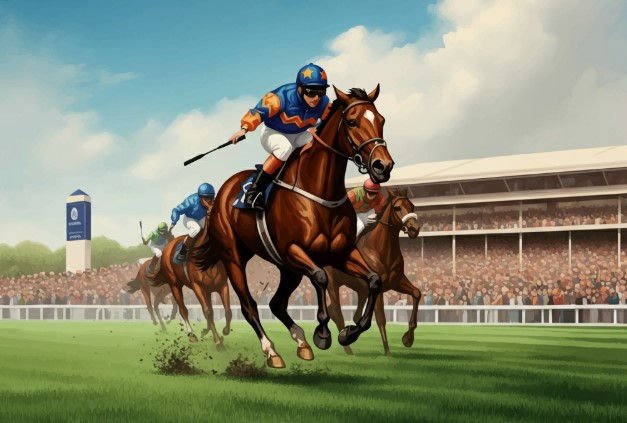When it comes to horse racing, winning isn’t just about luck. Creating a winning strategy often calls for a deep understanding of pace analysis, especially when betting on turf races. If you’ve been scratching your head wondering how professional bettors zero in on race winners, the secret is often hidden in this critical aspect of the race. Today, we’ll explore how understanding pace in turf racing can give you that winning edge and make terms like “turf universel” increasingly valuable to your betting game.
This blog will unpack the concept of pace analysis, why it matters for turf circuits, and how you can use it to identify potential winners. Whether you’re an avid bettor or just dipping your toe into the intricate world of horse racing, understanding pace can elevate your game.
What is Pace Analysis in Horse Racing?
Before we jump into its application to turf tracks, let’s address the basics. Pace analysis involves studying how a horse’s speed varies at different stages of a race. It considers a horse’s early speed, mid-race positioning, and finishing kick, correlating these elements with the track, distance, and competition.
Pace analysis helps bettors identify not only the fittest horse but also the one best suited to the anticipated race dynamics. Betting without understanding pace is like trying to solve a puzzle with missing pieces. Turf races, characterized by their often softer, more forgiving surface, bring their unique challenges where pace plays a pivotal role in identifying winners.
Why Pace Analysis Matters for Turf Races
The Nature of Turf Tracks
Turf tracks, sometimes referred to as “turf universel” for their global appeal in horse racing, differ significantly from dirt or synthetic tracks. Turf surfaces tend to be softer and have more give, which means maintaining speed throughout the race is much more challenging. Horses with a strong finishing kick have a better chance of excelling on turf, as these races tend to favor those who conserve energy early and make a powerful push in the final stretch.
Race Dynamics
Compared to dirt racing, turf races tend to produce slower early fractions and develop into more tactical affairs. Understanding how the pacing unfolds during these races allows bettors to anticipate whether the field will favor front-runners, mid-pack stalkers, or closers coming from behind.
For example, if a race lacks front-end speed horses, a savvy bettor might lean toward a horse with a proven ability to control the lead early and hang on late. Conversely, in a race overloaded with early speed contenders, you might want to look for a horse with a late kick that can pick off tired opponents in the stretch.
Breaking Down Turf Pace Analysis
To get truly good at picking turf winners, you’ll need a grasp of the core concepts within pace analysis:
1. Early Speed
The importance of early speed cannot be understated. Horses that break quickly can either set the pace or sit just off the leaders, depending on their preferred running style. For turf races, however, maintaining early speed is often less beneficial compared to dirt races, where front-runners dominate more frequently.
Look closely at a horse’s past performances to see how it runs its first quarter-mile. Horses with early tactical speed but the ability to relax in the middle stages (“rate well”) often excel on turf.
2. Mid-Race Stamina
For mid-pack runners, stamina plays a vital role. A horse conserving energy during the middle of the race often sets itself up for a strong finish. Horses with efficient “cruising speed” that matches the race’s pace scenario tend to perform well in turf universel settings.
The key is finding a horse with the right balance of energy dispersal—not burning out early but maintaining enough stamina to finish strong.
3. Closing Speed
Pace analysis on turf places a special emphasis on closing speed. Horses with a powerful finishing burst (often identified in past performances as having consistent late-speed fractions) are particularly suited for turf races where the pace collapses up front.
Using tools like sectional timing data or pace ratings can help pinpoint these closers in the field.
4. Versatility and Adaptability
Adaptability to pace scenarios is an underrated factor. Horses that thrive in varying pace scenarios, whether facing a slow-to-fast or fast-to-slow race, provide an edge over pace-dependent runners who wilt under the wrong circumstances.
Tools and Data for Effective Pace Analysis
Now that you know the basic elements of pace analysis, here are some tools and data points to sharpen your predictions:
- Speed Figures: Tools like Beyer Speed Figures help quantify a horse’s performance based on race times, adjusted for track conditions.
- Pace Charts: These break down sectional times to see where a horse accelerates or decelerates during a race.
- Race Replays: Watching previous races can offer invaluable insight into a horse’s pace management and adaptability.
- Form Guides with Pace Indicators: Look for thorough data guides that include pace projections, like Timeform or Equibase.
Practical Tips to Increase Your Edge
Use Track Bias to Your Advantage
Some turf tracks may inherently favor certain running styles, depending on weather conditions, maintenance, and layout. Knowing whether a specific turf course favors front-runners, mid-pack stalkers, or closers can drastically improve your selections.
Consider the Jockey
Jockeys play a critical role in executing pace strategy. Look for experienced turf jockeys with a proven ability to rate horses or produce perfectly timed late runs.
Watch for Pace Duels
If the field is loaded with speed horses, expect a heated pace duel upfront. That’s when the closer with the strongest late kick can shine. Conversely, if there’s only one or two pace-setters, they may be able to take the lead and never look back.
The Role of Turf Universel Races
Turf racing, often dubbed the “turf universel,” is a global phenomenon, with events held from the UK to Australia and the United States. The strategies outlined work universally across these regions, but professionals place an emphasis on adapting tactics to match the local racing style. For instance, European turf races tend to feature grueling uphill finishes, demanding even more exertion in the closing stages, while North American turf races might rely more on sharp, tactical speed.
Strategize Like a Pro
Pace analysis, when used correctly, is a game-changer for picking winners in turf racing. It allows you to predict how a race will unfold, identify horses that fit the anticipated pace scenario, and focus your bets on those with a genuine chance of success. From early speed to closing bursts, every element of pace tells a story about the race, and savvy bettors know how to interpret these narratives.
Are you ready to elevate your betting game and conquer the challenges of turf racing? Start incorporating pace analysis into your strategy today and discover why turf universel racing remains one of horse racing’s most exciting and rewarding domains.





